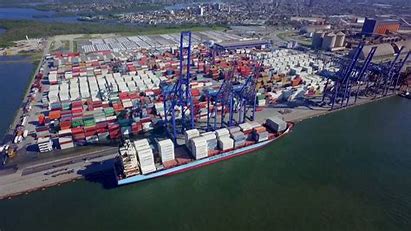Group with interests in heavy construction equipment, luxury cars expects to reach R$2.2bn in revenues this year
08/26/2022
/i.s3.glbimg.com/v1/AUTH_37554604729d4b2f9f3eb9ad8a691345/internal_photos/bs/2022/u/Q/z8QcIcSVAB8WoBFCWkog/050822clementefariajr-16.jpg)
Clemente Faria Junior — Foto: Maria Tereza Correia/Valor
Bamaq, a group with interests in heavy construction equipment, luxury cars, financing, and car insurance, plans to invest R$700 million by 2025 to expand current businesses and enter new services. The group ended 2021 with revenues of R$1.6 billion and expects to reach R$2.2 billion this year, up 37.5%. The expected profit for this year is R$108 million.
The largest investment will be made in a new business focused on leasing of heavy equipment (such as backhoe loaders and motor graders), trucks, and utility vehicles for construction. The group represents the brands Iveco, New Holland Construction, FPT Powertrain Technologies, and Continental in 14 states.
The group will also invest in opening a fintech, expanding a new tire sales business, opening new heavy equipment and luxury car dealerships, expanding a remote equipment management service, and expanding insurance services.
The CEO of the Bamaq Group, Clemente Faria Junior, said that by 2023 an investment of R$134 million will be made with own funds in the structuring of the heavy equipment and truck rental business. “From the second year of operation on, the intention is to finance half of the amount to be invested,” he said. The executive’s forecast is to make investments of R$160 million in 2024 and R$204 million in 2025, totaling R$498 million in three years. Mr. Faria added that most funds will be invested in the acquisition of a fleet for rental.
“Customers used to want to buy heavy equipment, but today there is growing demand for the use as a service model,” the executive said. He noted that the heavy machinery sales business now has 40,000 customers. For each heavy machine purchased, the same customer uses, on average, three trucks on the construction sites. And a portion of customers do not have funds available to acquire the entire fleet but are interested in the rental model.
Mr. Faria said that even the demand for the purchase of heavy equipment in Brazil is heated, mainly because of the demand from large agribusiness producers located in the region known as Matopiba — named after the four bordering states of Maranhão, Tocantins, Piauí, and Bahia. “Agribusiness accounts for 30% of our sales,” the CEO said. Besides equipment sales, the group sells auto parts, tires, and lubricants. It also does equipment maintenance and remote fleet management.
The area of heavy machinery and trucks operates today with 14 business units and revenues of R$672 million in 2021. This year, Bamaq foresees the opening of Iveco and New Holland Construction units, two of them in Marabá (Pará), one in Sinop (Mato Grosso) and one in Luís Eduardo Magalhães (Bahia).
Another bet in the heavy machinery area is the sale of Koneq, a remote telemetry service that allows the remote management of equipment. The service controls engine temperature, the hydraulic system, fuel level, machines in operation, and the electric fence. Currently, there are 940 pieces of heavy equipment in the field in the country monitored by this system. The goal, according to Mr. Faria, is to reach 3,000 systems installed within 12 months. Bamaq invested R$5 million to develop the technology and will invest more R$5 million in 2023 in the service.
In the area of luxury cars, which accounts for 25% of the group’s revenue, there are plans to open a Porsche store in Salvador this year. Bamaq is also investing in the expansion of the consortium for luxury vehicles. The group has Mercedes-Benz and Porsche dealerships and represents both brands in Minas Gerais. “We have just been appointed to represent Porsche in Bahia. The store in Salvador, expected to be opened in the fourth quarter, will be the first in the state,” said Mr. Faria.
The CEO said that vehicle sales grew 22% in the 12 months through June. “Today we have 1,200 people waiting in line for a Porsche, 400 waiting for a Mercedes-Benz, and 550 waiting for the delivery of heavy equipment,” said Mr. Faria. According to the executive, industries face difficulties to meet the heated demand of consumers in the post-pandemic due to lack of parts.
In this scenario, the group sees as an alternative to help control customer anxiety a successful Brazilian institution, the so-called “consórcio”. It’s a kind of buyer’s club, a purchasing pool through which a group of people pays monthly installments on a certain item, such as a car or a house so that every month the group can afford to buy one. In 2021, said Mr. Faria, the “consórcio” business grew 180% compared to the quotas sold. The volume of commercialized credits grew 89% and the portfolio increased 82%, surpassing 20,000 active clients.
Another bet of Bamaq is in the financial industry. The group has filed a request with the Central Bank to open a fintech, which will offer financial products and services by digital means, including vehicle and heavy equipment financing, loans, credit cards, and acquisition of receivables. The fintech will be composed of a direct credit company (SCD) and a credit rights investment fund (FIDC). The portfolio is expected to reach R$100 million in the first year, R$500 million in the second year and R$1.7 billion in five years.
Bamaq was founded in 1974 by Clemente Faria, grandson of the banker who founded Banco da Lavoura, in 1925, also named Clemente Faria. In 1971, his sons Gilberto and Aloísio Faria split Banco da Lavoura into Banco Bandeirantes and Banco Real, which were later sold to Caixa Geral de Depósitos (today Itaú-Unibanco), and ABN (today Santander). In 1974, the banker’s grandson, Clemente Faria, founded Bamaq, which started as a Fiatallis dealership (today New Holland Construction). The group operates in 16 states in the Northeast, North, Central-West, and Minas Gerais, employs 770 people, and has just over 70,000 active customers.
*By Cibelle Bouças — Contagem, Minas Gerais

/i.s3.glbimg.com/v1/AUTH_37554604729d4b2f9f3eb9ad8a691345/internal_photos/bs/2022/D/7/sLInDQQ56FFDg7M035QQ/weg-divulgacao-weg.png)
/i.s3.glbimg.com/v1/AUTH_37554604729d4b2f9f3eb9ad8a691345/internal_photos/bs/2022/J/L/GzohzEQzqxECZj7790Bg/audi-reproducao-instagram.png)

/i.s3.glbimg.com/v1/AUTH_37554604729d4b2f9f3eb9ad8a691345/internal_photos/bs/2022/u/s/z8lnPURFymQYn4AvOprw/12bra-100-marta-a4-img01.jpg)
/i.s3.glbimg.com/v1/AUTH_37554604729d4b2f9f3eb9ad8a691345/internal_photos/bs/2022/4/M/NzcHs5TBSxFCzADH1Q9Q/210921carlos22.jpg)
/i.s3.glbimg.com/v1/AUTH_37554604729d4b2f9f3eb9ad8a691345/internal_photos/bs/2022/W/I/n9GLYAQfu9B6gNOn18YA/16emp-100-ener-b1-img01.jpg)


